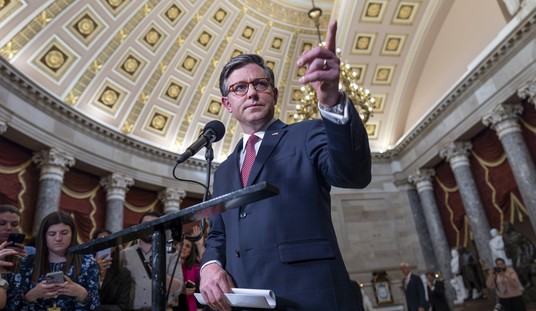Oregon passed “Measure 114” last November. It is generally labeled a permit-to-purchase requiring anyone buying a gun to buy a permit by paying “up to” $65 for the privilege. It also banned the sale of Large Capacity Magazines (LCM). A gun buyer must complete a firearms safety course (and pay a fee), submit a photo ID, be fingerprinted, and, of course, pass a criminal background review.
The law bans Federal Firearm Licensees (FFLs) from selling or transferring LCMs in their current inventory. Within 180 days of the law taking effect, the FFLs must either sell their LCMs to out-of-state firearm dealers, modify them to hold under 11 rounds, or destroy them.
The law grandfathers in current LCM owners, but they cannot use them outside of the home, a range, or for hunting. Military and law enforcement are exempt.
It barely passed with 50.7 percent of the vote. In one county, 85 percent of those voting cast a “No” vote. Sheriffs in some counties said they would not enforce the law if and when it went into effect.
On July 14th, U.S. District Court Judge Karin Immergut ruled after hearing evidence during a week-long trial that Measure 114 was constitutional. The ruling is 112 pages long. The court heard a lot of “facts” and expert testimony. What the court heard during a bench trial was “weighed” by the court. Most important is what the judge found compelling and what she found to be of less weight or of no weight.
In short, this court admitted some evidence but dismissed other evidence, such as:
“…between 1990 and 2018, there were 304.3 million detachable magazines in circulation in the United States.” Of those, “approximately 160 million had a capacity of eleven rounds or greater.” She found that that evidence “was entitled to little weight” (page 24). Instead, she found the testimony of an expert on self-defense use to be compelling. That evidence was that LCM is rarely used in self-defense and therefore were not in “common use.”
That is a stunning finding. It means that any gun or accessory not typically used in self-defense could be seen as not meeting the “common use” test and therefore could be banned.
This seems in conflict with what Justice Kavanaugh wrote in his Heller dissent (before he was a sitting SCOTUS Justice).
There is no meaningful or persuasive constitutional distinction between semi-automatic handguns and semiautomatic rifles.Semi-automatic rifles, like semi-automatic handguns, have not traditionally been banned and are in common use by law-abiding citizens for self-defense in the home, hunting, and other lawful uses. Moreover, semi-automatic handguns are used in connection with violent crimes far more than semi-automatic rifles are. It follows from Heller‘s protection of semi-automatic handguns that semi-automatic rifles are also constitutionally protected and that D.C.’s ban on them is unconstitutional.
And in the remanded matter of New York State Rifle & Pistol Association v. Bruen, the Supreme Court was not inclined to side with what seemed to be laws restricting the right to keep and bear arms — like Oregon’s Measure 114. Judge Immergut frequently cherry-picked from Bruen to satisfy her conclusions.
Also of note, current LCM owners are “exempt” inasmuch as they can keep what they already own. If there is a compelling “public safety” concern because most mass shooters used LCMs, and they can cause more injury and death, why then are current owners not ordered to turn in their LCMs? If an LCM is “more” dangerous than a 10-round capacity magazine, and is an existential public safety threat by just existing, then it is a danger now, not just in the future. Oregon didn’t attempt to confiscate LMCs because the state knew that such a measure would go down in flames. But that still leaves me wondering — if something is “dangerous,” how can the state justify not asking for all LCMs to be turned in?
Judge Immergut went on to write:
Magazine capacity is highly related to the lethality of a weapon, because capacity is what determines the number of shots that can be fired within a given time without having to pause to reload. Tr. 6/6/2023 513:5–10. State laws banning LCMs reduce the incidents of mass shootings between 48 to 72 percent and decrease the number of fatalities that occur in these mass shootings by 37 to 75 percent. Tr. 6/6/2023 506:14–19. Defendants presented credible evidence at trial demonstrating that the relationship between restrictions on LCMs and reductions in mass shootings is so pronounced that it is a causal relationship, meaning that the restrictions were at least partly responsible for the reductions. Tr. 6/6/2023 507:20–508:1.
I am not convinced that Judge Immergut’s reasoning is sound and suspect it will not hold up on appeal. It seems that ignoring that millions of LCMs are owned (and never used in mass shootings) is a fatal flaw in her ruling. Her finding that although they are owned by millions not typically used in self-defense seems like a pre-conceived conclusion in search of facts to support it.
California, Hawaii, Washington, and now Oregon have passed laws restricting LCMs, even though these laws, like Measure 114, will eventually make their way to SCOTUS and, in my opinion, will be found unconstitutional.
Be careful what you ask for, Oregon. It may come back to bite you.














Join the conversation as a VIP Member